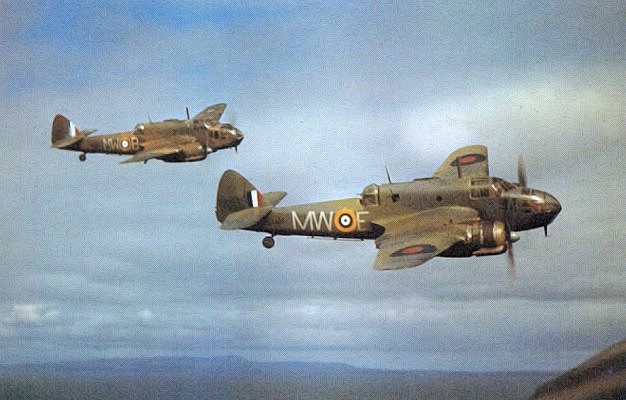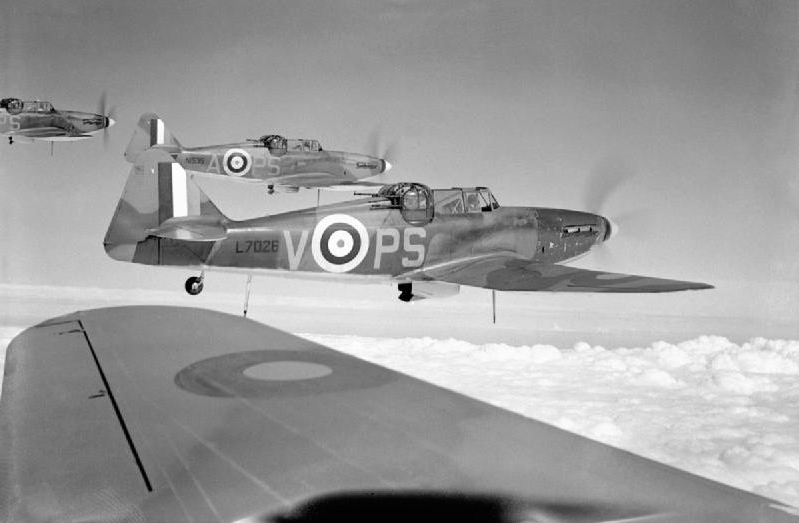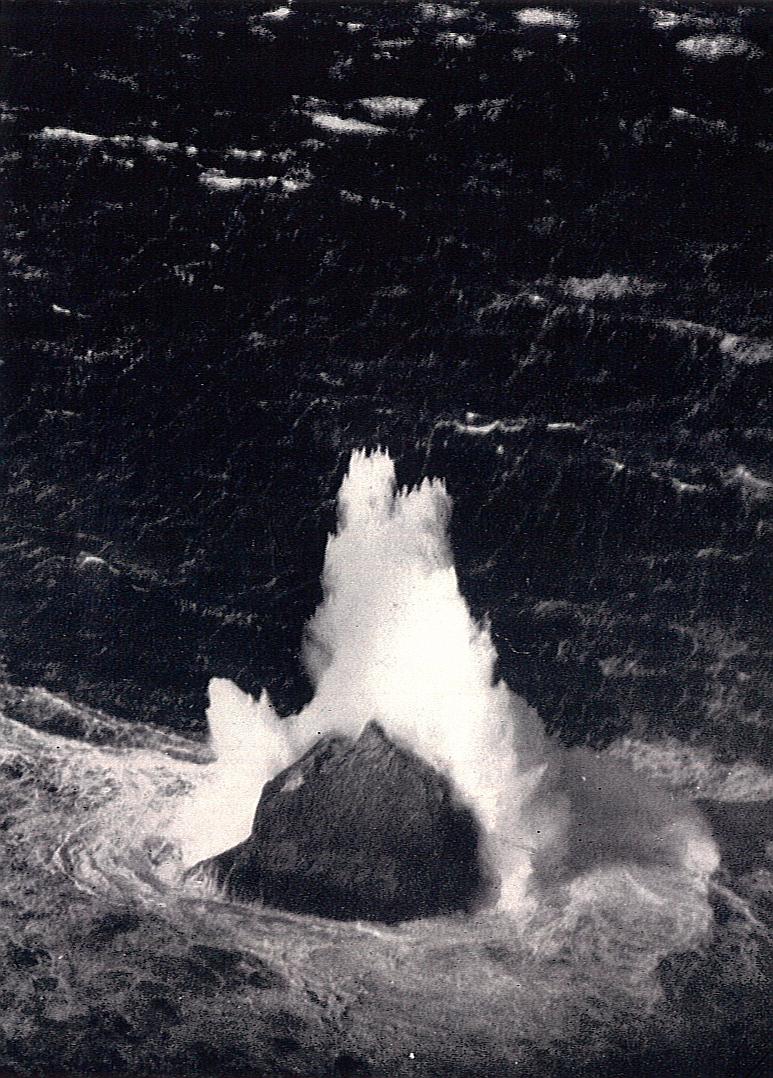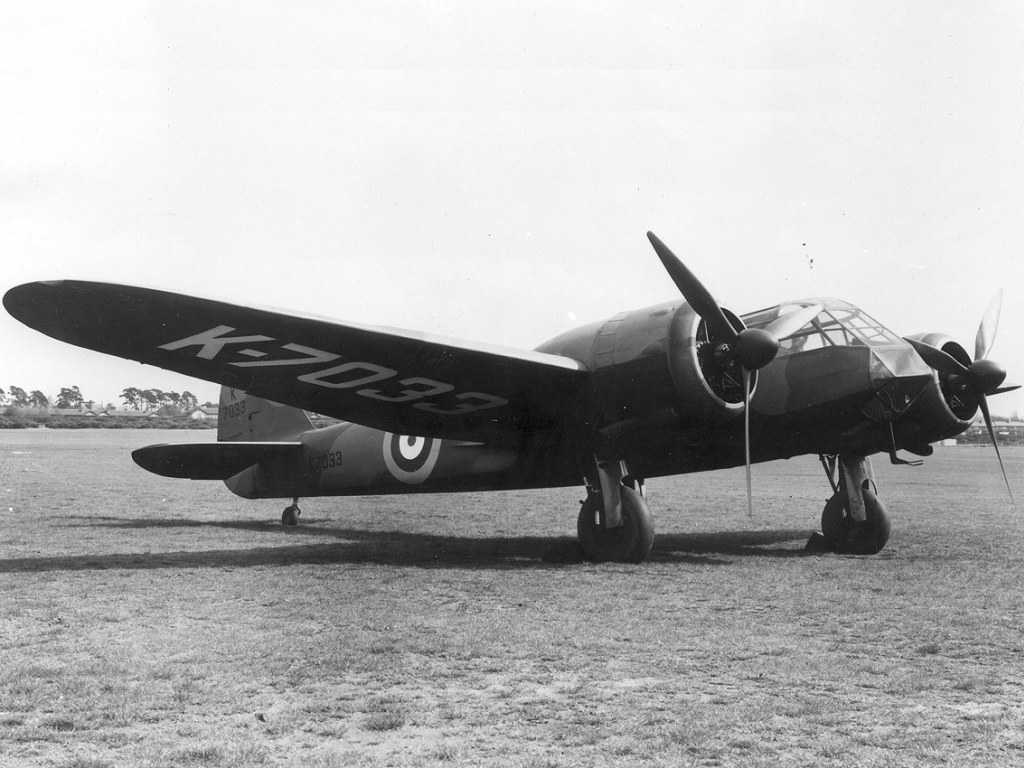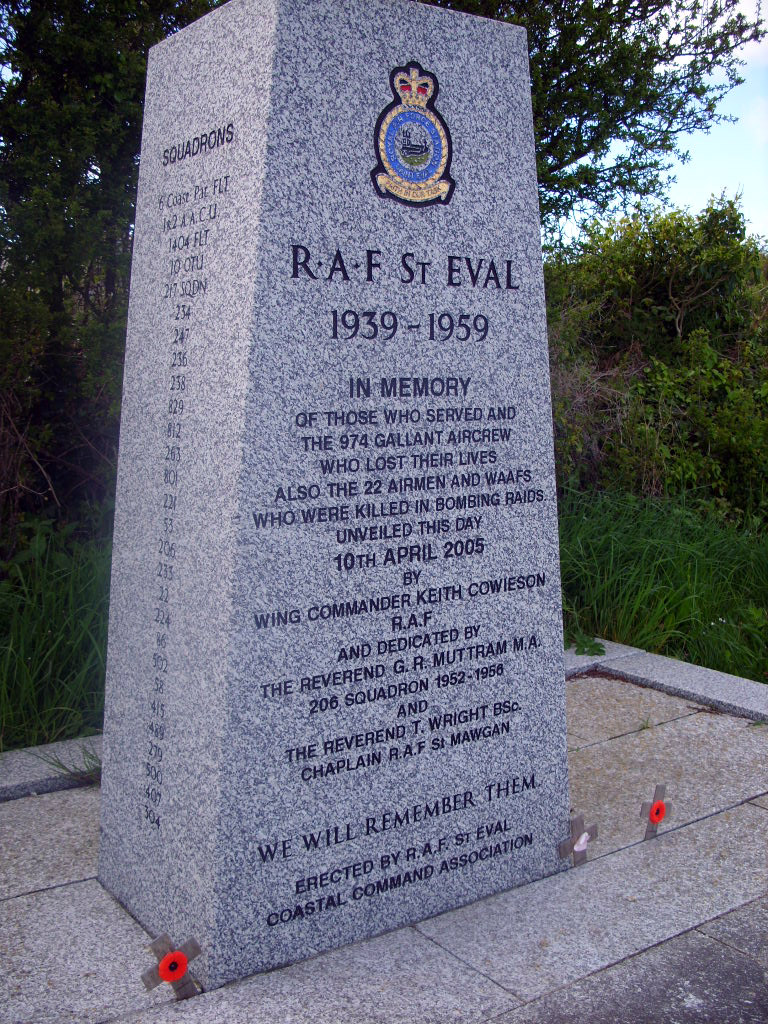|
RAF Limavady
Royal Air Force Limavady or more simply RAF Limavady is a former Royal Air Force station, also known as Aghanloo airfield, near the city of Derry, Northern Ireland. History The station was built in 1940 during the Second World War. The airfield was part of RAF Coastal Command and was important in the fight against U-boats in the Atlantic Ocean. ;Units The following units were also here at some point: * No. 7 (Coastal) Operational Training Unit RAF (April 1942 - May 1944) * No. 22 Air Crew Holding Unit * No. 2754 Squadron RAF Regiment * Loran Training Unit RAF (April 1945) became Coastal Command Anti U-Boat Devices School RAF (April - August 1945) During the Second World War the airfield was further used by the Fleet Air Arm when it was known as RNAS Limavady until 1958 when it was finally sold off. Current use After it was vacated by the military, the site was partly converted into an industrial estate with the rest returning to agricultural purposes. The runways and tax ... [...More Info...] [...Related Items...] OR: [Wikipedia] [Google] [Baidu] |
Ensign Of The Royal Air Force
An ensign is the national flag flown on a vessel to indicate nationality. The ensign is the largest flag, generally flown at the stern (rear) of the ship while in port. The naval ensign (also known as war ensign), used on warships, may be different from the civil ensign (merchant ships) or the yacht ensign (recreational boats). Large versions of naval ensigns called battle ensigns are used when a warship goes into battle. The ensign differs from the jack (flag), jack, which is flown from a jackstaff at the bow of a vessel. In its widest sense, an ensign is just a flag or other standard. The European military rank of Ensign (rank), ensign, once responsible for bearing a unit's standard (whether national or regimental), derives from it (in the cavalry, the equivalent rank was Cornet (rank), cornet, named after a type of flag). Ensigns, such as the ancient Roman ensigns in the Arch of Constantine, are not always flags. National ensigns In nautical use, the ensign is flown on a shi ... [...More Info...] [...Related Items...] OR: [Wikipedia] [Google] [Baidu] |
Avro Anson
The Avro Anson is a British twin-engined, multi-role aircraft built by the aircraft manufacturer Avro. Large numbers of the type served in a variety of roles for the Royal Air Force (RAF), Fleet Air Arm (FAA), Royal Canadian Air Force (RCAF) and numerous other air forces before, during, and after the Second World War. Initially known as the ''Avro 652A'', the Anson was developed during the mid-1930s from the earlier Avro 652 airliner in response to a request for tenders issued by the British Air Ministry for a maritime reconnaissance aircraft. Having suitably impressed the Ministry, a single prototype was ordered, which conducted its maiden flight on 24 March 1935. Following an evaluation in which the Type 652A bettered the competing de Havilland DH.89, it was selected as the winner, leading to Air Ministry Specification 18/35 being written around the type and an initial order for 174 aircraft being ordered in July 1935. The Type 652A was promptly named after British Admira ... [...More Info...] [...Related Items...] OR: [Wikipedia] [Google] [Baidu] |
RAF Ballyhalbert
Royal Air Force Ballyhalbert or more simply RAF Ballyhalbert is a former Royal Air Force station at Ballyhalbert on the Ards Peninsula, County Down, Northern Ireland RAF Kirkistown was a satellite to the larger Ballyhalbert. Construction began in 1940. History Royal Air Force use It opened provisionally in May 1941, prior to completion of the works, as a RAF Fighter Command base where the primary weapon was the Supermarine Spitfire, and officially on 28 June of that same year. The base provided local protection from Luftwaffe raids on Belfast and the rest of the province. Other aircraft operated from the base were the Hawker Hurricane, Bristol Beaufighter, North American Mustang and Boulton Paul Defiant night fighter. During its lifetime, Ballyhalbert was home to RAF, Women's Auxiliary Air Force (WAAF), British Army, Royal Navy and United States Army Air Forces (USAAF) personnel. Servicemen from Australia, New Zealand, Canada and Poland also saw duty at Ballyhalbert. ; S ... [...More Info...] [...Related Items...] OR: [Wikipedia] [Google] [Baidu] |
Bristol Beaufighter
The Bristol Type 156 Beaufighter (often called the Beau) is a British multi-role aircraft developed during the Second World War by the Bristol Aeroplane Company. It was originally conceived as a heavy fighter variant of the Bristol Beaufort torpedo bomber. The Beaufighter proved to be an effective night fighter, which came into service with the Royal Air Force (RAF) during the Battle of Britain, its large size allowing it to carry heavy armament and early airborne interception radar without major performance penalties. The Beaufighter was used in many roles; receiving the nicknames ''Rockbeau'' for its use as a rocket-armed ground attack aircraft and ''Torbeau'' as a torpedo bomber against Axis shipping, in which it replaced the Beaufort. In later operations, it served mainly as a maritime strike/ground attack aircraft, RAF Coastal Command having operated the largest number of Beaufighters amongst all other commands at one point. The Royal Australian Air Force (RAAF) also m ... [...More Info...] [...Related Items...] OR: [Wikipedia] [Google] [Baidu] |
Boulton Paul Defiant
The Boulton Paul Defiant is a British interceptor aircraft that served with the Royal Air Force (RAF) during World War II. The Defiant was designed and built by Boulton Paul Aircraft as a "turret fighter", without any fixed forward-firing guns, also found in the Blackburn Roc of the Royal Navy. In combat, the Defiant was found to be effective at destroying bombers, the role it was designed for, but was vulnerable to the ''Luftwaffe''s more manoeuvrable, single-seat Messerschmitt Bf 109 fighters. The Defiant had been designed to destroy unescorted bombers by means of beam or ventral attacks and therefore lacked forward-firing armament, that proved to be a great weakness in daylight combat with fighters. It did, however, find success when it was converted to a night fighter. It eventually equipped thirteen squadrons in this role,Cagill 2005, p. 44. compared to just two squadrons as a day-fighter, though this was mainly due to slow initial production. In mid-1942 it was replaced by ... [...More Info...] [...Related Items...] OR: [Wikipedia] [Google] [Baidu] |
RAF Thorney Island
Royal Air Force Thorney Island or more simply RAF Thorney Island is a former Royal Air Force station located on Thorney Island, West Sussex, England, west of Chichester and east of Portsmouth, Hampshire. Station history The airfield was built in 1938 for fighter aircraft and was involved in the Battle of Britain when it was attacked by the Luftwaffe on the same day as other stations such as RAF Ford and RAF Poling radar station. RAF Thorney Island was transferred to RAF Coastal Command for the protection of shipping and other various roles, and had its concrete runways laid in 1942. The station closed as an RAF airfield on 31 March 1976; however, the Royal Artillery re-opened the site in 1982. Operational history Major units As with many RAF Coastal Command airfields, a great variety of squadrons and aircraft were posted to RAF Thorney Island during World War II; in particular: No. 22 Squadron RAF moved to the airfield on 10 March 1938 firstly using Vickers Vildebeest a ... [...More Info...] [...Related Items...] OR: [Wikipedia] [Google] [Baidu] |
RAF Aldergrove
Joint Helicopter Command Flying Station Aldergrove or more simply JHC FS Aldergrove is located south of Antrim, Northern Ireland and northwest of Belfast and adjoins Belfast International Airport. It is sometimes referred to simply as Aldergrove which is the name of a nearby hamlet. The military flying units share the Aldergrove runways but have their own separate facilities and helipad. The site was formerly RAF Aldergrove, a Royal Air Force station which was in operation between 1918 and 2009. History Inter-war years RAF Aldergrove first opened in 1918 but was not designated as an operational RAF station until 1925. Various squadrons were posted here during this time: * A detachment of No. 4 Squadron RAF between 30 April 1920 and 26 September 1922 again with the Bristol F2B. * No. 2 Squadron RAF initially at full strength between 2 June 1922 and 27 September 1922 and then as an detachment until 17 September 1923 flying the Bristol F2B Fighter. * No. 502 Squadron RAF ... [...More Info...] [...Related Items...] OR: [Wikipedia] [Google] [Baidu] |
Bristol Blenheim
The Bristol Blenheim is a British light bomber aircraft designed and built by the Bristol Aeroplane Company (Bristol) which was used extensively in the first two years of the Second World War, with examples still being used as trainers until the end of the war. Development began with the ''Type 142'', a civil airliner, in response to a challenge from Lord Rothermere to produce the fastest commercial aircraft in Europe. The ''Type 142'' first flew in April 1935, and the Air Ministry, impressed by its performance, ordered a modified design as the ''Type 142M'' for the Royal Air Force (RAF) as a bomber. Deliveries of the newly named Blenheim to RAF squadrons commenced on 10 March 1937. In service the Type 142M became the Blenheim Mk.I which would be developed into the longer Type 149, designated the Blenheim Mk.IV, except in Canada where Fairchild Canada built the Type 149 under licence as the Bolingbroke. The Type 160 Bisley was also developed from the Blenheim, but was already o ... [...More Info...] [...Related Items...] OR: [Wikipedia] [Google] [Baidu] |
RAF St Eval
Royal Air Force St. Eval or RAF St. Eval was a Royal Air Force station for the RAF Coastal Command, southwest of Padstow in Cornwall, England, UK. St Eval's primary role was to provide anti-submarine and anti-shipping patrols off the south west coast. Aircraft from the airfield were also used for photographic reconnaissance missions, meteorological flights, convoy patrols, air-sea rescue missions and protection of the airfield from the Luftwaffe. History The construction of the station The Royal Air Force's 1930s expansion plan included a requirement for a station to provide anti-submarine and anti-shipping patrols off the South-west coast of England. The site at St Eval was chosen as a Coastal Command airfield and work started in 1938. Five widely dispersed cottages, two houses and portions of two farms were acquired by compulsory purchase; the village of St Eval was completely demolished in order to build the airfield. Levelling of the site by G Wallace Ltd involved the remo ... [...More Info...] [...Related Items...] OR: [Wikipedia] [Google] [Baidu] |
RAF Bircham Newton
Royal Air Force Bircham Newton or more simply RAF Bircham Newton is a former Royal Air Force station located south east of Docking, Norfolk and north east of King's Lynn, Norfolk, England. History The site was first used during the First World War and received the largest British bomber of the time, the Handley Page V/1500. They would have carried out bombing missions against Berlin but the Armistice was arranged before any missions were actually flown. There were several communication squadrons active at the airfield during 1919. The airfield was equipped with one aircraft repair shed and three double bay general service sheds, although these had been demolished by 1937. It had two Belfast hangars, three C Type hangars, three Bellman hangars and ten Blister hangars. It operated through the Second World War as part of No. 16 Group RAF as part of RAF Coastal Command. No. 206 Squadron RAF was one of the squadrons being based there, on maritime patrol duties. Two satellite ... [...More Info...] [...Related Items...] OR: [Wikipedia] [Google] [Baidu] |
RAF Skitten
Royal Air Force Skitten or more simply RAF Skitten is a former Royal Air Force satellite station directly east of the village of Killimster, located north east of Watten, Caithness, Scotland and northwest of Wick, Caithness, Scotland. On 19 November 1942, Operation Freshman departed from RAF Skitten. History ;Squadrons: ;Units: * No. 1693 (General Reconnaissance) Flight (September - December 1943) * No. 2709 Squadron RAF Regiment * No. 2716 Squadron RAF Regiment * No. 4010 Anti-Aircraft Flight RAF Regiment Current use The site is now used for quarrying and as farmland. See also * List of former Royal Air Force stations This list of former RAF stations includes most of the stations, airfields and administrative headquarters previously used by the Royal Air Force. The stations are listed under any former county or country name which was appropriate for the du ... References Citations Bibliography * * * * {{DEFAULTSORT:Skitten Royal Air Force stations of Wor ... [...More Info...] [...Related Items...] OR: [Wikipedia] [Google] [Baidu] |
RAF Stornoway
Royal Air Force Station Stornoway or more simply RAF Stornoway is a former Royal Air Force station near the burgh of Stornoway, on the Isle of Lewis, in the Western Isles of Scotland. No. 112 Signals Unit Stornoway was also part of the RAF's activity on the airfield. History Beginnings The station was created in the Second World War on the site of a former golf course. It was home to various RAF Coastal Command squadrons patrolling the North Atlantic for U-boats. In late 1940, a detachment of Avro Anson aircraft arrived from No. 612 (County of Aberdeen) Squadron RAF, Royal Auxiliary Air Force. The Ansons operated from the site of RAF Stornoway while it was still under construction. By November 1940, the aircraft from 612 Squadron had been posted to RAF Wick and were gradually replaced by Ansons from No. 48 Squadron RAF, based at RAF Hooton Park. In March 1940, 827 Naval Air Squadron operated Fairey Albacore aircraft from Stornoway in conjunction with the Ansons of 48 Squad ... [...More Info...] [...Related Items...] OR: [Wikipedia] [Google] [Baidu] |

